Southern Maine bartenders have got some explaining to do.
When they suggest a customer try one of their latest creations — a shrub cocktail — often all they get is a quizzical look, or a polite no thank you.
In the public’s mind, a shrub cocktail sounds like a drink with bush clippings in it. And it doesn’t sound any more appetizing when they learn it’s made with a concentrated syrup that contains fruit, sugar and vinegar.
“Even when I would explain it (to customers), saying it was a vinegar-based drink, or a fruit-and-vinegar-based syrup, some would be put off by it,” said Guy Streitburger, bar manager at Gingko Blue, who served a cocktail made with strawberry-rhubarb shrub this summer and is working on one made with blueberries and lemon verbena.
Shrubs are old-fashioned drinks that date to Colonial times, but they are on their way back, thanks to the folks behind the bar who are discovering that a shrub’s bright, slightly tart, complex flavors make for a stand-out cocktail. Bartenders are doing lots of experimenting by replacing the fruit in the shrub with vegetables and herbs, trying out different kinds of vinegar, and otherwise tweaking the classic shrub formula.
There are suddenly a surprising number of shrub cocktails on local restaurant menus, perhaps because it’s traditionally known as a refreshing summer drink. Other theories for its rising popularity include the move away from sugary drinks and the rise of the craft cocktail movement, where fresh, local ingredients are key and everyone is always looking to the past to find something new.
“Even in the cocktail world nationally, it’s still a little bit of a niche,” said Andrew Volk, who is hoping to open his Portland Hunt and Alpine Club cocktail bar in Portland at the end of the month. “Everybody understands what it is, but it’s tough to get right. With shrubs, the acid is very strong, and with that strong of an acid, it takes a certain touch to be able to balance it well.”
THE SMITH FAMILY SHRUB
I first learned about shrubs back in 2006, when I wrote a column about raspberry shrub. A reader had sent me an old Portland Press Herald clipping that appeared to be from around the 1940s. It was a piece by the famous food writer Clementine Paddleford, who is a whole story on her own. (R.W. Apple called her “the Nellie Bly of culinary journalism.”)
Paddleford had paid a visit to Maine’s own Margaret Chase Smith, and wrote about how the Republican member of Congress used the raspberries she grew at home to make tarts and pies.
“But delight to the lady of Maine was the making of her grandmother’s raspberry shrub which she served as a symbol of old-time hospitality,” Paddleford wrote. “Now that Mrs. Smith has succeeded her husband in Congress and Washington is home, she makes the shrub there in her kitchenette apartment. But only a dozen bottles this year; shrub dips too deeply into the sugar.”
I couldn’t resist making a batch of Smith’s family shrub. It had just a few ingredients: four quarts of raspberries, one quart of cider vinegar and sugar. Here’s the simple recipe, which I ended up cutting in half:
“Clean and pick over berries. Cover with vinegar and let stand for four days. Strain. To each cup of juice add one cup of sugar. Boil 15 minutes and bottle when cold. Approximate yield: 5 cups syrup. Serve diluted with three parts cold water to one part syrup. Fill a tall glass with crushed ice and pour in the perfume. Tingle it, whiff it, sip it — and smile.”
The basic shrub syrup will keep in the refrigerator for weeks.
In my research back then, I found that the word “shrub” is an Arabic word that means “drink” and is related to “sharba,” the word for syrup. In Colonial America, making shrubs was the way to preserve fruit before it went bad.
Extra fruit was stored with sugar, “and the addition of vinegar was to stop fermentation,” said Benjamin Lord, one of the proprietors of The Black Birch in Kittery, where shrubs have been a regular on the menu this summer. (The current one is their own version of a raspberry shrub.)
“A lot of early shrubs were low alcohol anyway because you were starting to get fermentation from airborne yeast, and so you’d have a little bit of natural effervescence and you would use the vinegar to kill off the yeast.”
In the 1800s, shrubs were often used as a mixer for rum or brandy. They died off for a variety of reasons, including the industrialization of the food system and the rise of spirits.
“You don’t see (shrubs) often pre-Prohibition, and you don’t see them in the Civil War era,” Volk said. “They’re much more late 1700s and early 1800s, and you don’t see them late 1800s at all, really. They kind of pop up here and there, but it certainly was very popular in Colonial times, and they’re starting to make a comeback.”
ON THE ENDANGERED LIST
The shrub is one of only three beverages placed on Slow Food USA’s Ark of Taste, a catalog of more than 200 foods that are in danger of extinction.(The other two are American rye whiskey and greenthread tea, a traditional tea brewed by the Navajo, Hopi and Pueblo Indians.)
A basic shrub calls for equal parts fruit, sugar and vinegar. Where you go with it from there, however, is a matter of taste.
Margaret Chase Smith’s raspberry shrub recipe calls for infusing the vinegar with the fruit before adding the sugar. Others macerate the fruit in the sugar first — the sugar pulls all the moisture out of the fruit — then add the vinegar. Some recipes call for simmering the syrup, others do not.
And there are other choices to be made: What kind of vinegar should you use? What kind of alcohol works best with the flavors of the fruit you’ve chosen? What other flavors do you want to add to the mix?
For his strawberry-rhubarb shrub, Streitburger made a “slow refrigeration shrub.” He let the sugar and fruit macerate for 24 hours at room temperature, along with some peppercorns for added bite. Then he added two kinds of vinegar, cider and balsamic, “and just let that sit in the fridge so all the flavors can come together slowly, stirring every day.”
To make the cocktail he calls the Burning Bush, Streitburger mixes the shrub with Eight Bells rum, a local rum from New England Distilling, a few drops of habanero tincture, soda water and ice. (To make the habanero tincture, simply drop some habanero peppers into vodka and let it infuse for a few days or weeks, depending on how hot you want it.)
Lord said he has experimented with using local honey and other sources of sugar instead of simple cane sugar. He lets the fruit sit in the vinegar for a couple of days, then cuts it with water and honey to taste.
Lord, like most creators of craft cocktails, prefers using apple cider and Champagne vinegars. White vinegar is just too sharp and acidic.
“Vinegar is something that, when done well, is a very interesting, fantastic flavor,” he said. “You don’t really want it to be overpowering. You don’t want it to be the dominant thing in that beverage, but you want it to be in the background.”
The vinegar, Lord said, makes shrub cocktails very food-friendly. They pair with a wide variety of foods, cutting through fatty or buttery dishes.
In the fall, he envisions pairing duck with a shrub cocktail made from local cherries. Reeling ideas off the top of his head, he also thought of an apple-and-fennel shrub that would pair well with pork or a Thanksgiving turkey. He would slice the apples and macerate them in sugar and a bit of salt, he said, then add apple cider vinegar and raisins as another source of sugar and flavor.
BING AND ZING
At Grace in Portland, bartender Luke O’Neill has been experimenting a lot with shrub cocktails. One of his latest was an amazingly flavorful Bing cherry cocktail that was bright, slightly tart and a bit smoky, with just enough sweetness from the cherries to counter the raspberry vinegar he used in the concoction.
The shrub recipe calls for equal parts fresh pitted Bing cherries, cane sugar and raspberry vinegar.
O’Neill began by pitting the cherries and mashing them a bit with his hands along the way. Then he added an equal part of sugar and let that sit for just under a week. Every couple of days he mixed it a bit more by hand.
Then he strained the liquid from the cherries, added raspberry vinegar and let it sit for another week. (Again, stir this mixture occasionally.)
“Really the longer it sits, the better it gets, and it keeps for a very long time,” O’Neill said. “Some of them can ferment a little bit on their own, which adds interesting layers and more complexities to the overall flavor. Over time, the sugar and the tartness of the vinegar kind of balance each other out.”
To make the cocktail (which he also named Burning Bush), O’Neill added some dry vermouth infused with Bing cherries and Eight Bells rum.
“You need something that has a backbone because the shrub is so rich in its own right,” he said, “and you have to add enough so that it comes through, but not enough that it’s overwhelming.”
The cocktail is then topped off with soda water and garnished with a Luxardo cherry in a highball glass.
O’Neill is now making a Champagne shrub with Champagne grapes and Champagne vinegar. To make a cocktail, he mixes that shrub with Dolin Blanc vermouth, Grey Goose vodka and a Cabernet Sekt (an Austrian sparkling wine) float. The drink, served in a martini glass, is garnished with frozen Champagne grapes.
On deck for fall is a currant, rosemary and sherry vinegar shrub.
Trey Hughes made a shrub cocktail for the Blue Spoon called the Hailing Signal that contained a sour orange shrub, Jamaican rum, soda and a bit of sherry.
When sage threatened to overtake his garden, Hughes experimented with a number of sage-based shrubs that also included ingredients such as cucumber, apple and celery.
Hughes, who will be on the staff at the Portland Hunt and Alpine Club when it opens, also makes a cucumber shrub he uses in a drink he calls the Hideaway. He uses a juicer to extract the cucumber juice for the shrub, but says a blender would work as well if you pour the mixture through a strainer.
Even if you’re not into cocktails, shrubs make great non-alcoholic drinks. Just add a little shrub to some soda water and you’re good to go.
“It’s syrupy and strong on its own,” Streitburger said. “That’s why when it’s with soda water, it is absolutely spectacular. You can use it on ice cream. It’s very versatile.”
Staff Writer Meredith Goad can be contacted at 791-6332 or at:
mgoad@pressherald.com
Twitter: MeredithGoad
Send questions/comments to the editors.


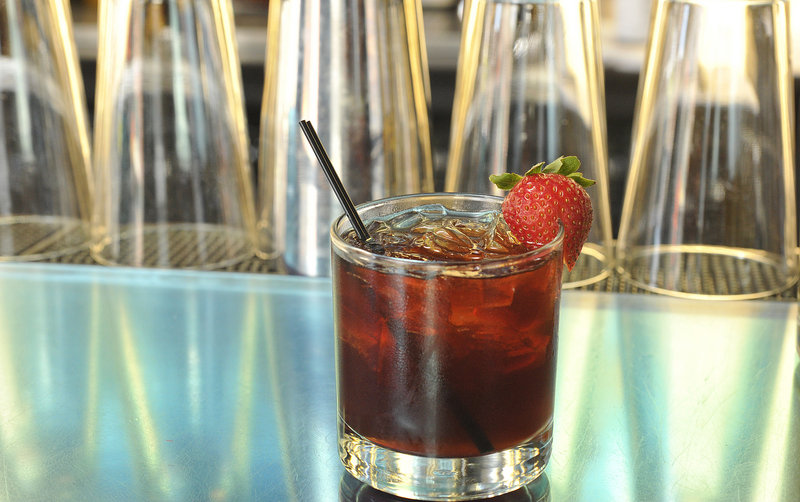
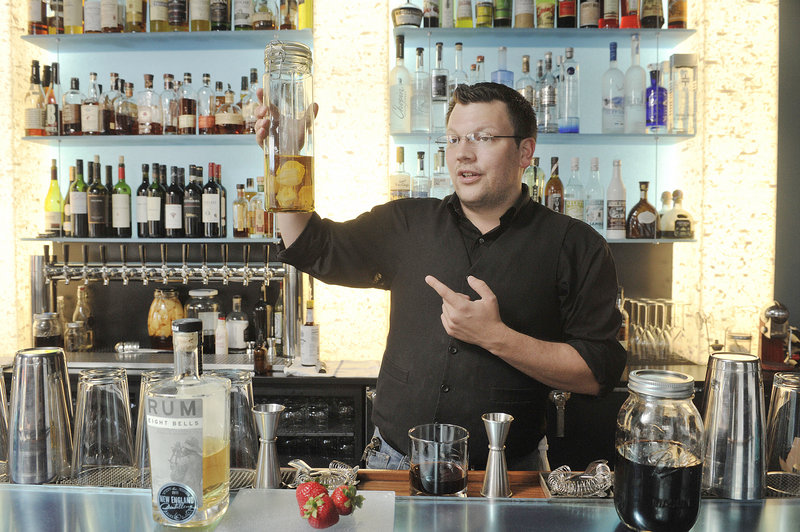
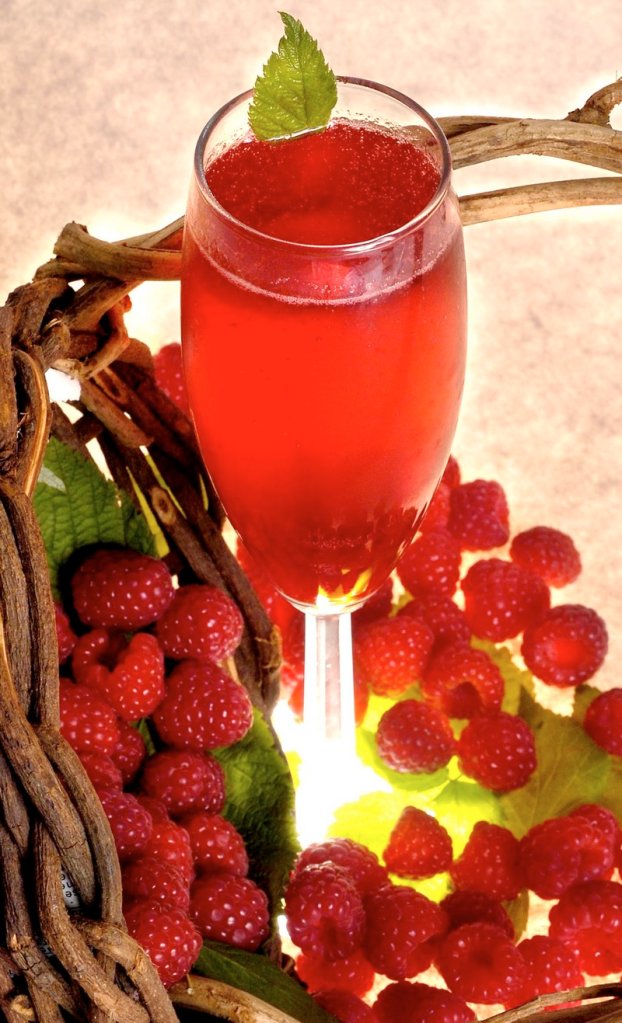
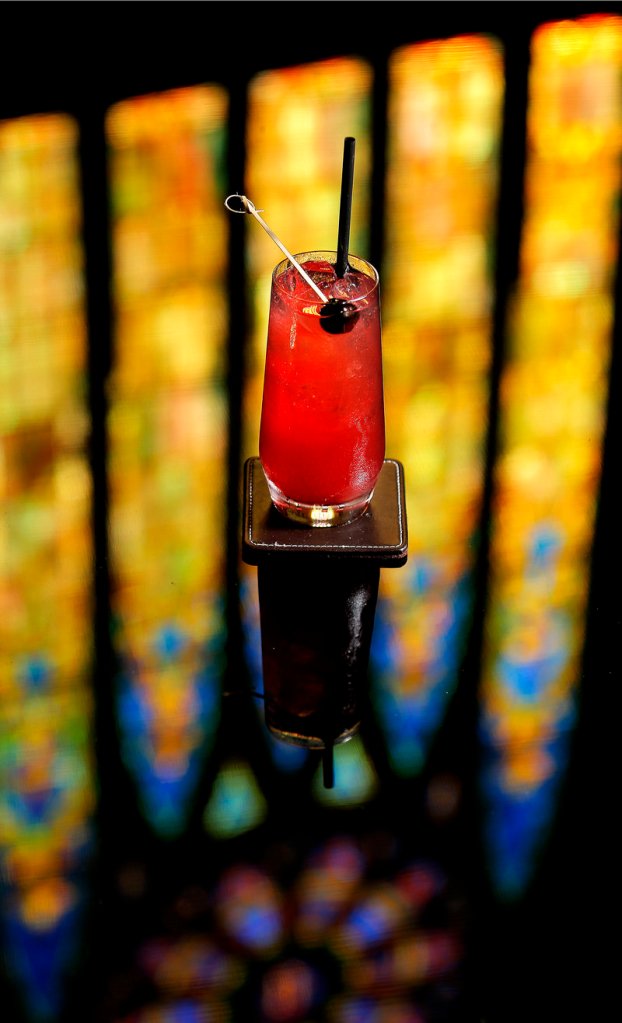
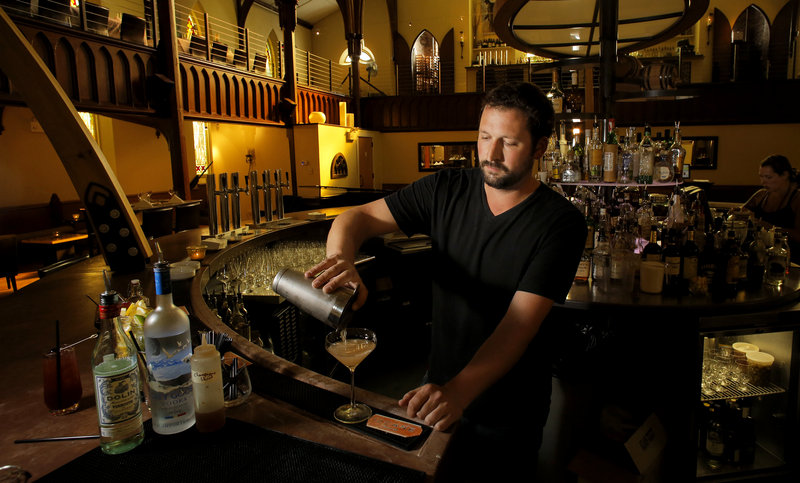
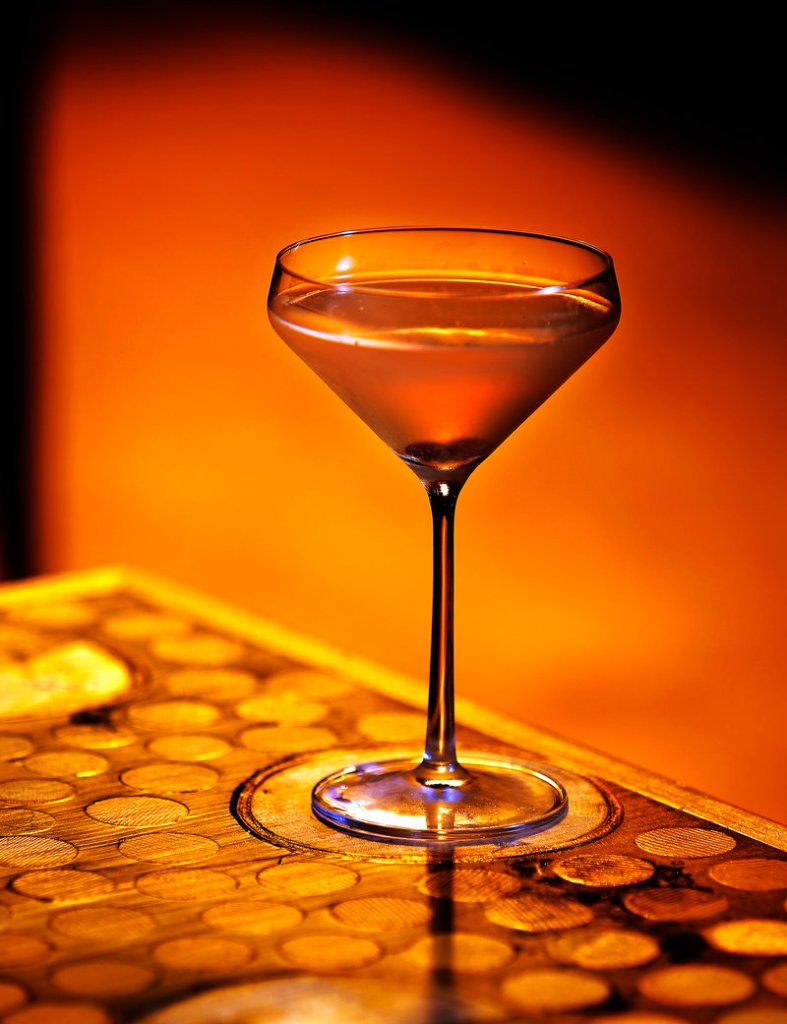

Comments are no longer available on this story